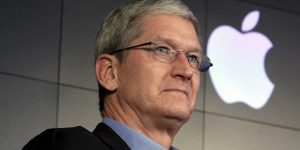Fragmentation is Biggest Threat to Mobile Market Success, Even Beyond Android
![]() When it comes to the mobile space, Apple and Google are highly talked about players. But as the battle for domination continues into the tablet realm, it’s Apple that’s stretched its head start into a standing lead. According to Appcelerator’s latest quarterly report, it’s the other players, including Google, RIM and Nokia, that are cooling off. But for Appcelerator’s growing network of developers, its the mobile cloud that will determine a large aspect of trends in the coming year, presenting market opportunities for publishers and advertisers alike.
When it comes to the mobile space, Apple and Google are highly talked about players. But as the battle for domination continues into the tablet realm, it’s Apple that’s stretched its head start into a standing lead. According to Appcelerator’s latest quarterly report, it’s the other players, including Google, RIM and Nokia, that are cooling off. But for Appcelerator’s growing network of developers, its the mobile cloud that will determine a large aspect of trends in the coming year, presenting market opportunities for publishers and advertisers alike.
For Appcelerator’s quarterly report, the platform creator surveys its developers to gain insight to the mobile playing field. With over 1,000 developers surveyed, and over 10k apps in its platform, Appcelerator’s offered some great gauge points for the developing mobile market, comparing expectations to actual results, particularly in the tablet arena. But with over a trillion dollars in market cap at play in today’s mobile platform space, it’s a massive struggle to the top. With Apple iOS and Google Android having established themselves as major powers, its time to draw out some of the strategies around complete platform domination.
One of the key findings from the Appcelerator report is that iOS interest remains high, with 91% of developers saying they’re “very interested” in iPhone development, with over 85% indicating their interest for the iPad. Google, on the other hand, has declined in terms of developer interest for tablet apps, dropping three points to 71%, after increasing twelve points in Q1. Tablet interest is in sharp contradiction with Android smartphone developer interest, which continues to increase over the past year.
Fragmentation continues to be a sticking point for Android developers, and even touches on possible reasons for the tablet’s decline in interest. Honeycomb’s done little to improve developers’ hopes for Android tablets, and complications around fragmentation interfere with Android-specific business tactics that look to leverage a wider section of the mobile market. Nearly two-thirds of survey respondents said that device fragmentation in Android poses the biggest threat to the platform itself, with weak initial traction and disparate Android app stores taking 30% and 28% of developer responses respectively.
But mobile developer issues go beyond Android fragmentation, with multiple coding languages being the primary obstacle for developers. The differences amongst iOS, Android and WP7 themselves also pose problems for developers, even as each platform does its best to appeal to the developer community. This is an issue each platform can address accordingly, incorporating it into their own long-term strategy for dominating the market. Google in particular will need to continually address the matter, starting with its own fragmentation issues.
![]() For developers and publishers, however, the growing possibilities of the mobile cloud offer a few ways to still prosper amidst mobile fragmentation. Mobile devices’ ability to deliver necessary content at the right time and place has relied heavily on the cloud, with the three-tier web model giving way to distributed, connected services. We’ve entered the mobile cloud era, and developers are quite ecstatic about the range of options this presents.
For developers and publishers, however, the growing possibilities of the mobile cloud offer a few ways to still prosper amidst mobile fragmentation. Mobile devices’ ability to deliver necessary content at the right time and place has relied heavily on the cloud, with the three-tier web model giving way to distributed, connected services. We’ve entered the mobile cloud era, and developers are quite ecstatic about the range of options this presents.
Eighty-four percent of Appcelerator respondents said they’re already using one or more cloud-enabled or cloud-based service in their applications, with multiple cloud services like Google, Azure, YouTube or PayPal playing large roles in how a mobile app can come together as a useful consumer tool. Appcelerator delineated the use of 44 top cloud services to see its network’s breakdown, with 78% of respondents tapping into the social cloud, spanning Facebook and Twitter.
A healthy 70% are connecting to commerce services, either third party tools or native to the mobile OS, including PayPal and Apple. Seventy percent of respondents also tap into enterprise services, connecting to the likes of Oracle and SAP. Media services like YouTube and Flickr take up another 65% of the developer market, while display ad services like iAd or AdMob take up another 42%.
“With over 20,000 native mobile applications in the Appcelerator Titanium portfolio today, we have seen an overriding theme emerge: mobile and cloud-connectivity are together defining the context and engagement of the key mobile app scenarios in use today,” explained Jeff Haynie, CEO, Appcelerator. “It is important for any business looking at mobile to have a strategy around a well-orchestrated integration between the cloud and mobile applications.”
A message from John Furrier, co-founder of SiliconANGLE:
Your vote of support is important to us and it helps us keep the content FREE.
One click below supports our mission to provide free, deep, and relevant content.
Join our community on YouTube
Join the community that includes more than 15,000 #CubeAlumni experts, including Amazon.com CEO Andy Jassy, Dell Technologies founder and CEO Michael Dell, Intel CEO Pat Gelsinger, and many more luminaries and experts.
THANK YOU



















